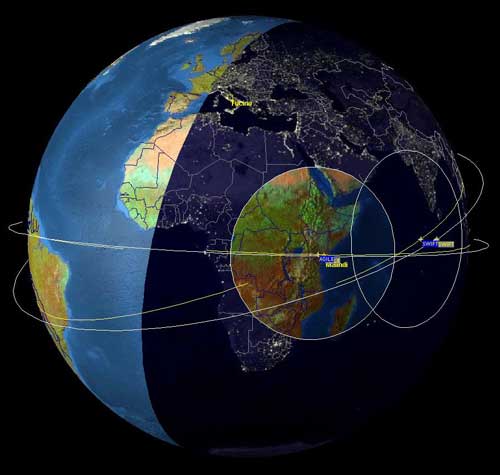It’s Raining Gamma Rays

Image credit: P. Tempesta/Telespazio
Reprinted with permission from http://focus.aps.org/story/v26/st12
If you happen to step outside into a thunderstorm, I bet the last thing you are concerned about is getting hit by gamma rays. Instead, I’m sure you’re more concerned about whether or not you remembered your umbrella or how close the lightning may be to you and your new set of golf clubs. New evidence shows that thunderstorms sometimes produce gamma rays, but don’t be alarmed. A team of scientists has been using satellite data to find out where gamma ray pulses are coming from with a great deal of accuracy in order to clarify if these pulses are related to lightening. The satellite that scientists are using is the Italian Space Agency’s AGILE, originally launched to collect data on astrophysical events. It is equipped with detectors that determine the gamma ray’s direction and ultimately determine the ray’s location.
Read the Focus story
Abstract of the paper from Physical Review Letters: Phys. Rev. Lett. 105, 128501 (issue of 17 September 2010)











